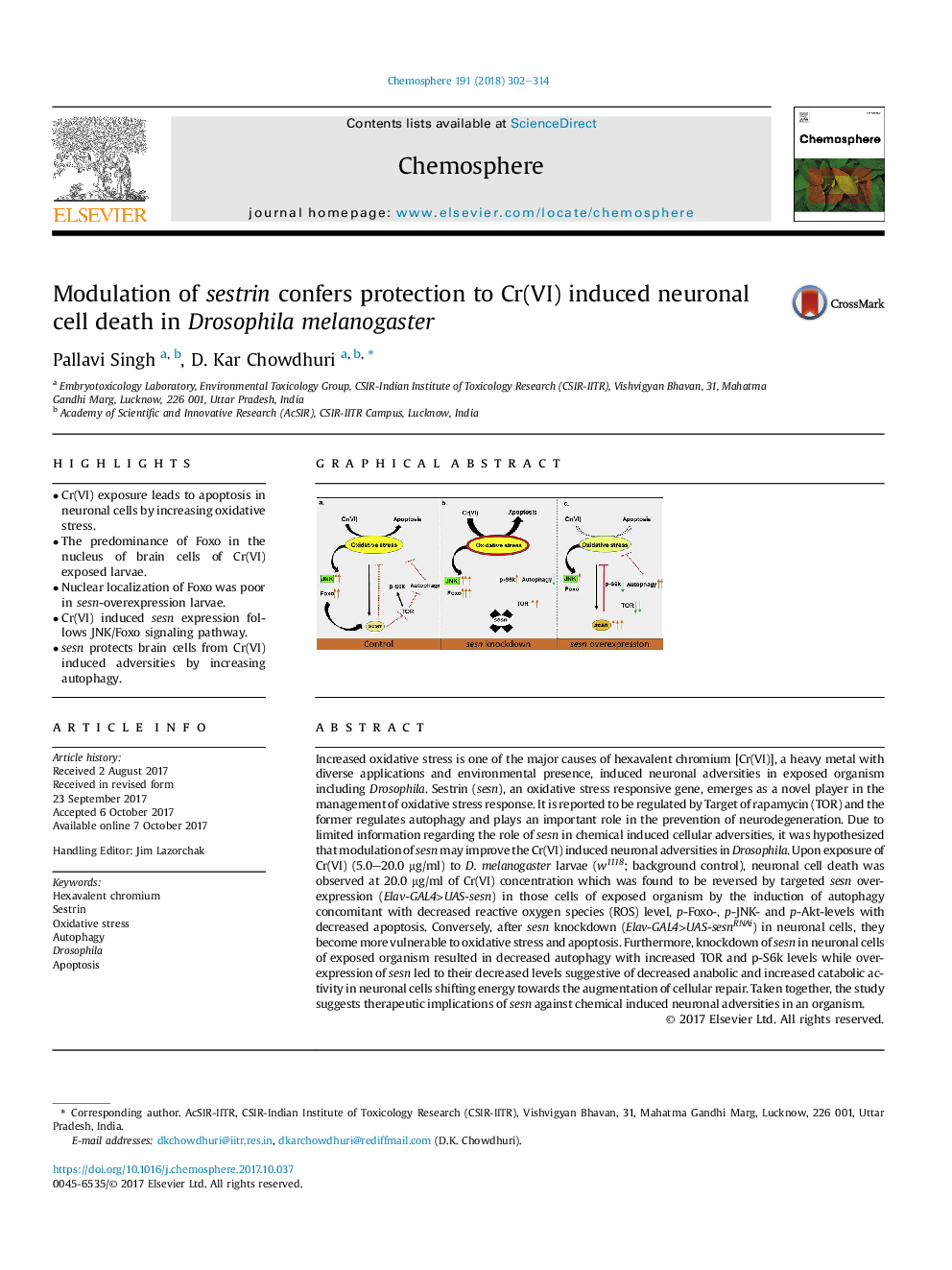| کد مقاله | کد نشریه | سال انتشار | مقاله انگلیسی | نسخه تمام متن |
|---|---|---|---|---|
| 5745732 | 1618780 | 2018 | 13 صفحه PDF | دانلود رایگان |

- Cr(VI) exposure leads to apoptosis in neuronal cells by increasing oxidative stress.
- The predominance of Foxo in the nucleus of brain cells of Cr(VI) exposed larvae.
- Nuclear localization of Foxo was poor in sesn-overexpression larvae.
- Cr(VI) induced sesn expression follows JNK/Foxo signaling pathway.
- sesn protects brain cells from Cr(VI) induced adversities by increasing autophagy.
Increased oxidative stress is one of the major causes of hexavalent chromium [Cr(VI)], a heavy metal with diverse applications and environmental presence, induced neuronal adversities in exposed organism including Drosophila. Sestrin (sesn), an oxidative stress responsive gene, emerges as a novel player in the management of oxidative stress response. It is reported to be regulated by Target of rapamycin (TOR) and the former regulates autophagy and plays an important role in the prevention of neurodegeneration. Due to limited information regarding the role of sesn in chemical induced cellular adversities, it was hypothesized that modulation of sesn may improve the Cr(VI) induced neuronal adversities in Drosophila. Upon exposure of Cr(VI) (5.0-20.0 μg/ml) to D. melanogaster larvae (w1118; background control), neuronal cell death was observed at 20.0 μg/ml of Cr(VI) concentration which was found to be reversed by targeted sesn overexpression (Elav-GAL4>UAS-sesn) in those cells of exposed organism by the induction of autophagy concomitant with decreased reactive oxygen species (ROS) level, p-Foxo-, p-JNK- and p-Akt-levels with decreased apoptosis. Conversely, after sesn knockdown (Elav-GAL4>UAS-sesnRNAi) in neuronal cells, they become more vulnerable to oxidative stress and apoptosis. Furthermore, knockdown of sesn in neuronal cells of exposed organism resulted in decreased autophagy with increased TOR and p-S6k levels while overexpression of sesn led to their decreased levels suggestive of decreased anabolic and increased catabolic activity in neuronal cells shifting energy towards the augmentation of cellular repair. Taken together, the study suggests therapeutic implications of sesn against chemical induced neuronal adversities in an organism.
300
Journal: Chemosphere - Volume 191, January 2018, Pages 302-314